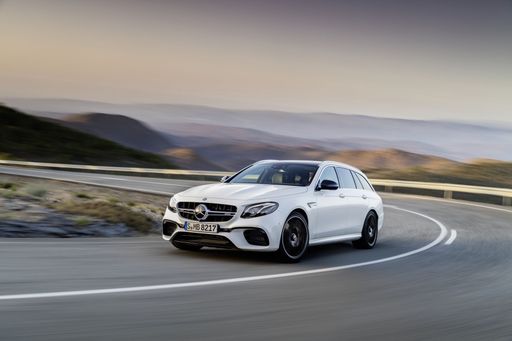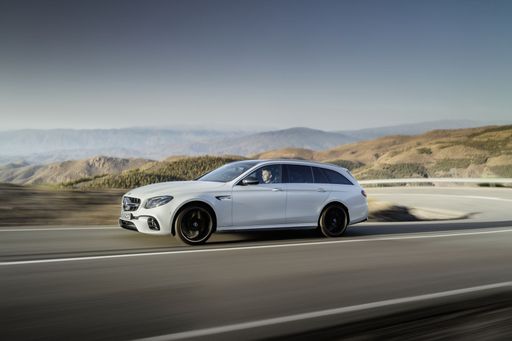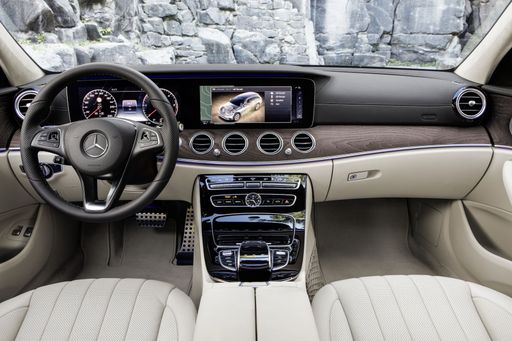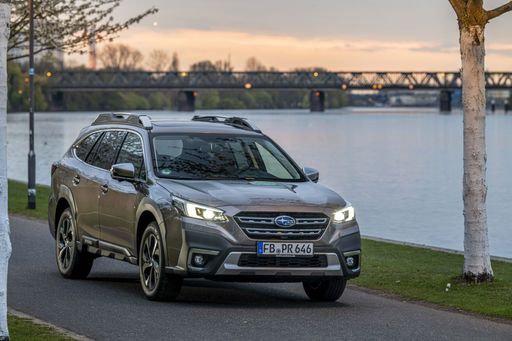Mercedes E-Class Wagon vs Subaru Outback – Which one offers the better deal?
Compare performance, boot capacity, efficiency and price at a glance.
Find out which car is the better choice for you – Mercedes E-Class Wagon or Subaru Outback?
Costs and Efficiency:
Looking at overall running costs, both models reveal some interesting differences in everyday economy.
Subaru Outback has a convincingly advantage in terms of price – it starts at 37200 £, while the Mercedes E-Class Wagon costs 52600 £. That’s a price difference of around 15398 £.
Fuel consumption also shows a difference: Mercedes E-Class Wagon manages with 1.70 L and is therefore decisively more efficient than the Subaru Outback with 8.60 L. The difference is about 6.90 L per 100 km.
Engine and Performance:
Power, torque and acceleration are the classic benchmarks for car enthusiasts – and here, some clear differences start to show.
When it comes to engine power, the Mercedes E-Class Wagon has a convincingly edge – offering 585 HP compared to 169 HP. That’s roughly 416 HP more horsepower.
In acceleration from 0 to 100 km/h, the Mercedes E-Class Wagon is significantly quicker – completing the sprint in 4.10 s, while the Subaru Outback takes 10.20 s. That’s about 6.10 s faster.
In terms of top speed, the Mercedes E-Class Wagon performs evident better – reaching 250 km/h, while the Subaru Outback tops out at 193 km/h. The difference is around 57 km/h.
There’s also a difference in torque: Mercedes E-Class Wagon pulls decisively stronger with 750 Nm compared to 252 Nm. That’s about 498 Nm difference.
Space and Everyday Use:
Whether family car or daily driver – which one offers more room, flexibility and comfort?
Both vehicles offer seating for 5 people.
In curb weight, Subaru Outback is slightly lighter – 1643 kg compared to 1900 kg. The difference is around 257 kg.
In terms of boot space, the Mercedes E-Class Wagon offers barely noticeable more room – 615 L compared to 561 L. That’s a difference of about 54 L.
In maximum load capacity, the Mercedes E-Class Wagon performs minimal better – up to 1830 L, which is about 8 L more than the Subaru Outback.
When it comes to payload, Mercedes E-Class Wagon somewhat takes the win – 645 kg compared to 557 kg. That’s a difference of about 88 kg.
Who wins the race?
The Mercedes E-Class Wagon proves to be is largely superior and therefore becomes our DriveDuel Champion!
Mercedes E-Class Wagon is the better all-rounder in this comparison.

Mercedes E-Class Wagon
Mercedes E-Class Wagon
The Mercedes-Benz E-Class Wagon offers a harmonious blend of luxury and practicality, making it a favourite for those who value both style and functionality. Its sleek exterior design is matched by a sophisticated interior that provides a comfortable and spacious environment for both driver and passengers. This vehicle also boasts advanced technology features, ensuring a smooth and connected driving experience.
details @ group-media.mercedes-benz.com
@ group-media.mercedes-benz.com
 @ group-media.mercedes-benz.com
@ group-media.mercedes-benz.com
 @ group-media.mercedes-benz.com
@ group-media.mercedes-benz.com
 @ group-media.mercedes-benz.com
@ group-media.mercedes-benz.com
Subaru Outback
The Subaru Outback offers a perfect blend of rugged capability and modern comfort, making it an ideal choice for those who love adventure without compromising on convenience. Its robust design is complemented by advanced safety features and a spacious interior, ensuring a relaxed and secure driving experience. With a reputation for reliability and versatility, the Outback continues to stand out in its class, appealing to drivers who appreciate both performance and practicality.
details @ Subaru
@ Subaru

|

|
|
|
|
Costs and Consumption |
|
|---|---|
|
Price
52600 - 121800 £
|
Price
37200 - 41600 £
|
|
Consumption L/100km
1.7 - 7.9 L
|
Consumption L/100km
8.60 L
|
|
Consumption kWh/100km
-
|
Consumption kWh/100km
-
|
|
Electric Range
97 - 109 km
|
Electric Range
-
|
|
Battery Capacity
21.20 kWh
|
Battery Capacity
-
|
|
co2
44 - 181 g/km
|
co2
193 g/km
|
|
Fuel tank capacity
50 - 66 L
|
Fuel tank capacity
63 L
|
Dimensions and Body |
|
|---|---|
|
Body Type
Estate
|
Body Type
Estate
|
|
Seats
5
|
Seats
5
|
|
Doors
5
|
Doors
5
|
|
Curb weight
1900 - 2435 kg
|
Curb weight
1643 - 1676 kg
|
|
Trunk capacity
460 - 615 L
|
Trunk capacity
561 L
|
|
Length
4949 - 4959 mm
|
Length
4870 mm
|
|
Width
1880 mm
|
Width
1875 mm
|
|
Height
1469 - 1497 mm
|
Height
1670 - 1675 mm
|
|
Max trunk capacity
1675 - 1830 L
|
Max trunk capacity
1822 L
|
|
Payload
540 - 645 kg
|
Payload
524 - 557 kg
|
Engine and Performance |
|
|---|---|
|
Engine Type
Petrol MHEV, Plugin Hybrid, Diesel MHEV
|
Engine Type
Petrol
|
|
Transmission
Automatic
|
Transmission
Automatic
|
|
Transmission Detail
Automatic Gearbox
|
Transmission Detail
CVT
|
|
Drive Type
All-Wheel Drive, Rear-Wheel Drive
|
Drive Type
All-Wheel Drive
|
|
Power HP
186 - 585 HP
|
Power HP
169 HP
|
|
Acceleration 0-100km/h
4.1 - 8.8 s
|
Acceleration 0-100km/h
10.20 s
|
|
Max Speed
213 - 250 km/h
|
Max Speed
193 km/h
|
|
Torque
320 - 750 Nm
|
Torque
252 Nm
|
|
Number of Cylinders
4 - 6
|
Number of Cylinders
4
|
|
Power kW
137 - 430 kW
|
Power kW
124 kW
|
|
Engine capacity
1993 - 2999 cm3
|
Engine capacity
2498 cm3
|
General |
|
|---|---|
|
Model Year
2024 - 2025
|
Model Year
2024
|
|
CO2 Efficiency Class
G, E, F, B, D
|
CO2 Efficiency Class
G
|
|
Brand
Mercedes-Benz
|
Brand
Subaru
|
What drivetrain options does the Mercedes E-Class Wagon have?
The Mercedes E-Class Wagon is offered with All-Wheel Drive or Rear-Wheel Drive.
The prices and data displayed are estimates based on German list prices and may vary by country. This information is not legally binding.
